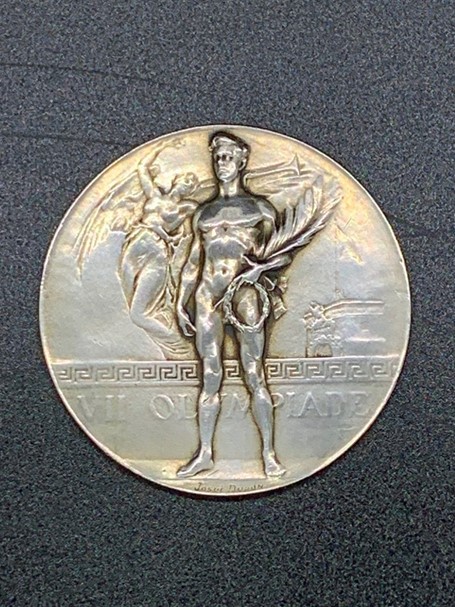1920, A WATERSHED YEAR FOR GLOBAL AND INDIAN HOCKEY
Share
By K. ARUMUGAM
The year 1920 marked an important phase for Indian hockey. The Beighton Cup, the oldest trophy outside of Europe, had celebrated its silver jubilee early that year. Named after the donor of the rolling trophy T.D. Beighton, then top functionary of the British in India, the cup was stolen a few years prior but a replica was put in place to continue the legacy.
Xavier’s Club, an exclusive Anglo-Indian outfit won the silver jubilee edition beating Calcutta Football Club. The year also saw the famous Lakshmibilas Cup won by the Dacca (now Dhaka and capital of Bangladesh) based Bisweswar Sports Club. It was big honour for both the Xaverians and Bisweswarians as it was their maiden success on such a big stage.
About 2000 km away from Calcutta (now Kolkata) where these two events took place in 1920, the famous Aga Khan competition was also a grand success on two counts. Firstly, Lahore (now in Pakistan) based civil team North Western Railways won the 24th edition, handing out a narrow defeat to Hornets Club. Secondly, after hovering over different venues, the Aga Khan Cup found its home, the Bombay Gymkhana Club in Mumbai.
What happened at Kolkata and Mumbai proved the fact that hockey had matured as a competitive sport. Vast stands, triple the number of participating teams compared to the maiden event, good gate collection and media coverage meant the Indian hockey was poised to go places.
In fact, it did.
No fewer than a dozen schools, all catering to affluent sections of society, ran hockey teams and were successful in producing quality players. Those schools, mostly the boarding variety, were located either in metro cities or hill stations such as Wellington, Darjeeling, Mussorie, Mount Abu etc. The majority of these institutions were run by either Irish Christian Brothers or Jesuit Priests.
There was also a third front where hockey was actually taking a giant leap. It was in the cantonments. Besides annual inter and intra military hockey competitions, Delhi was the cynosure of all eyes just a decade ago when King George V and Queen Mary visited. Only during that visit from Coronation Park, which lies 15km away from present President of India’s Rashtrapati Bhawan, the visiting King announced the moving of India’s capital from Calcutta to Delhi. On that occasion, in the run up to the grand reception, hockey teams all over India assembled for what was to be called the Coronation Cup. This cup was in addition to many other inter and intra-military unit competitions that were being held.
However, 1920 is also remembered for a globally significant happening. That year, in the Belgian city of Antwerp, field hockey was played at the Olympics only for the second time.
More about it by London-based Hockey Museum’s Mike Haymonds.
The Hockey Museum in Woking, England, has had its first sight of a 1920 Olympic gold medal. It was won by Harry Haslam, the Great Britain goalkeeper at the Antwerp Games, and has been loaned to the Museum, together with other memorabilia, by Haslam’s family.

1920 Olympic Gold medal
It will be displayed at a private presentation at the Museum on 5 September, when members of Haslam’s family will receive his Great Britain honours cap. Saturday is the centenary of the final day of the 1920 Olympic hockey tournament, played as a four-nation round robin event, and the centenary of the awarding of gold medals to the GB team. Great Britain had beaten Denmark (5-1) and hosts Belgium (12-1) and were awarded a walkover in their final game against France on the previous day to secure gold.
The official launch and presentation of honours caps to the GB teams, most of who will be going to the Tokyo Olympics, will be made at a Pro League weekend next May. Besides the gold medal the memorabilia includes an oil painting of Haslam, an Antwerp participation medal and civilian medals.
The Antwerp medal (as described below on the Olympics website) is of gold gilt, unlike the 1908 London Olympic gold medal, held on loan by The Hockey Museum, and looks more like silver. It is believed this less expensive metal was used because money was still scarce so soon after World War One.
The 1920 Antwerp Olympic Medal is described on the official Olympic website thus:

1920 Olympic participation medal
“On the obverse, a tall, naked athlete, holding in his left hand a palm leaf and a laurel crown, symbols of victory. Behind him, the figure of the Renommée playing the trumpet. In the background, a frieze with a Greek motif with the inscription “VII OLYMPIADE” underneath.
On the reverse, the Antwerp monument, commemorating the legend of Brabo throwing into the Scheldt the hand of the giant DruoonAntigoon, who had been terrorizing the river. In the background, the cathedral and port of Antwerp. In the top half, the inscription “ ANVERS MCMXX ”.
Source: www.olympic.org
Great Britain’s gold medal at the 1920 Antwerp Olympic Games came under strange circumstances, allegedly arising from a misguided piece of skulduggery.
Only four nations competed at these Games and, after round robin matches, the gold medal was to be decided by the penultimate game between Great Britain and France.
The Ilford Recorder in an article on the GB goalkeeper Harry Haslam, whose club was Ilford HC, on July 18 1996 described the affair thus:
“Great Britain’s opponents invited our lads out on the town – with the intention of drinking them legless. The French found their opponents were made of sterner stuff than themselves in the hangover league and the inebriated opposition actually conceded the next day’s game following their mutual night out on the town.”
Another source, also penned many decades later, refers to an epidemic near the French team’s accommodation. This may of course be a tactful way of suggesting the French team were the worse for wear, or it could be sincere.
The French finished last after losing their other two games.


The wonderful piece
Great to know about this history of hockey
Seriously I was not having any information about this incidence but after reading this article by going on the given link provided me information and knowledge
So I request everyone to visit this website by going on the link, It will help you in future
That’s a good for us to know history of hockey.
That’s so much information of history so far, so glad to know all these details of the past
I m grateful to know this information that’s not only information in fact very precious moment to get this.
Thank you for it.